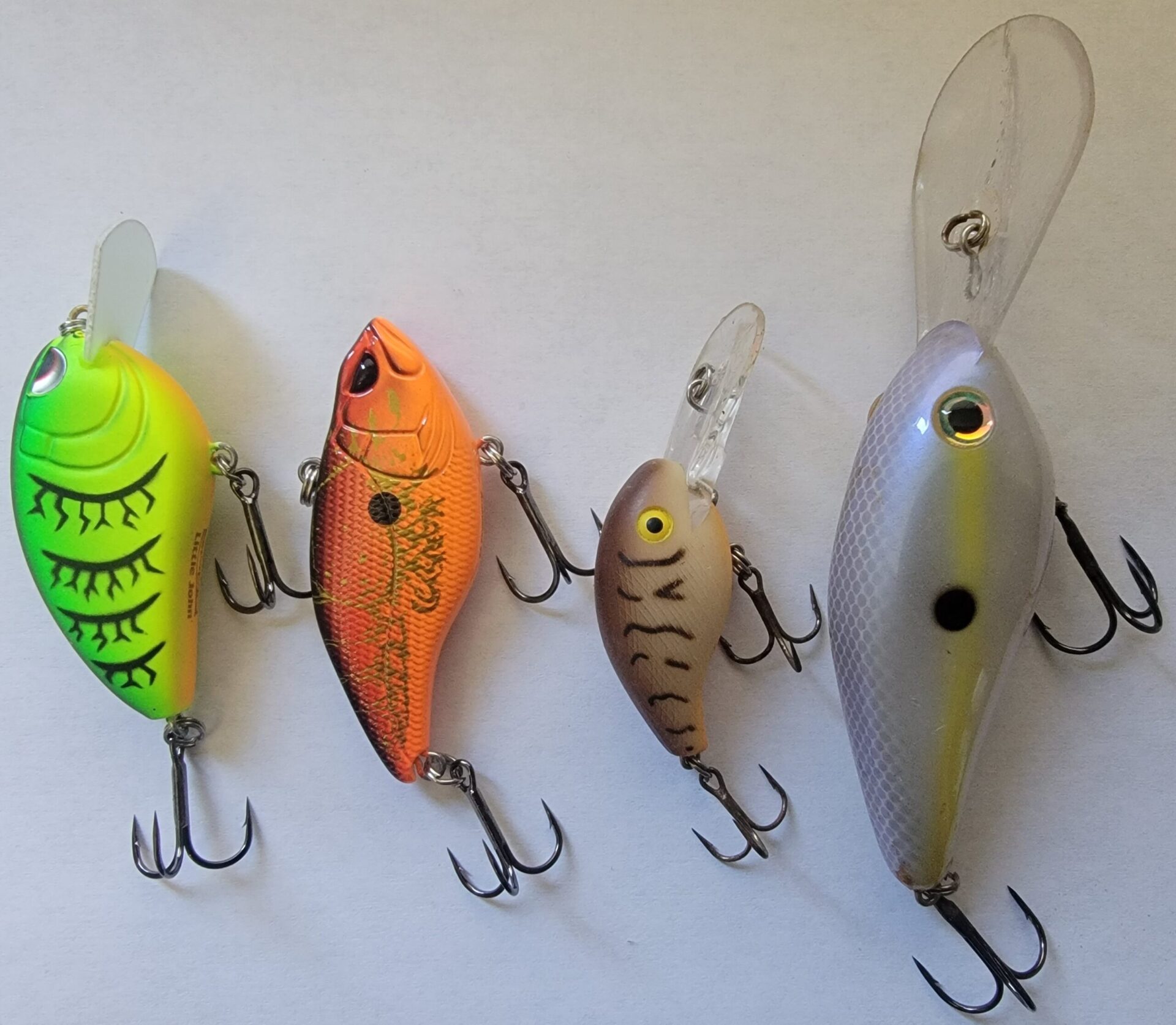During certain conditions, a crankbait can be the most useful tool in your tackle box. When you find that moving baits are the go-to on a certain day, crankbaits can aid in a great day of fishing. Weather, wind, and current play a key part in whether or not to fish a crankbait. There is a time and place for each type of crankbait.
Some anglers pride themselves on only using crankbaits while bass fishing. This is for good reason because a crankbait has been known to catch big bass. A crankbait is also a great tool to fire up a stagnant school bass that won’t bite anything else in your tackle arsenal.
Bass Fishing Crankbait Types
There are a few different types of crankbaits to choose from. Each has its unique use during a day of fishing. Having all types of these crankbaits in your tacklebox will help you figure out the bass bite fast on any given day. There are factors such as weather, wind, and current that affect what crankbait to use. Crankbaits should, for the most part, be fished around structure. Bouncing the crankbait off of the structure will trigger the bass to bite the bait. Below we will cover the basic 4 types of crankbaits available.
Lipless Crankbait
Square Bill Crankbait
Medium Diving Crankbait
Deep Diving Crankbait

Lipless crankbaits are mostly used in a pre-spawn situation. When you need to cover a lot of water on a spawning flat or area outside the spawning grounds, a lipless crankbait will excel. They can be fished in shallow water or deeper water with the different designs available.

Square bill crankbaits can be fished on both sides of the spawn. They entice a reaction bite from the bass as they are around spawning areas in coves. There are different diving depths for square bill crankbaits. Figure out what depth the bass is hanging around and use the square bill crankbait with the appropriate depth range.

Medium diving crankbaits cover a depth range of about 5-12 ft. This allows you to cast shallow and retrieve to deeper water. Following the contour of a sloped bank. This also allows an angler to make long casts to get the crankbait down to the depth where the fish are located.

Deep diving crankbaits are used by anglers in a league of their own. There is an art to using a deep diving crankbait in 15 + fow. Boat position and knowing where to cast are key to using a deep diving crankbait. These types of crankbaits are fished around deep schools of bass or brush piles. In a bass school situation, the school of bass will become competitive and fight over the bait.
How to Fish a Crankbait: Choosing Colors
With so many crankbait colors on the market, choosing one can be overwhelming. To keep it simple, if you have just chartreuse, craw, and shad colors in your tackle box you will catch fish on a crankbait. Each color is used in different situations that we will cover next.
Shad and chartreuse-looking colors should be fished in clear or deep water where the bass has good vision. These types of colors will excel in this situation. The bass thinks that it is a shad or baitfish moving through the water.
Craw and dark colors are fished in stained water, usually in the spring or after a hard rain. Bass can sense moving bait through the water column and this is what these are designed to do. These types of crankbaits excel in low-light conditions. Once the bass gets close enough to see the bait, it has a distinct craw pattern they can’t resist.
Rod | Reel | Line Setup for Crankbait Fishing
Crankbait fishing requires somewhat of a specialized setup. This will maximize your chances of landing bass hooked with a crankbait.
Use a medium-length rod for shallow and medium diving crankbaits. A medium-to-light action is best. A lot of times the rod will be built especially for crankbaits. Look for that on the rod builders page or brochure. When using deep diving crankbaits, you will want a longer rod in medium or higher action. This aids in long casts and reeling in fish from deep water.
Crankbait reels have a low gear ratio of 6:1 or 5:1. This aids in fishermen’s fatigue while fishing a crankbait all day. This will also aid in reeling in fish. It helps in not overpowering the fish while hooked. The type of line used is usually 10-12 lb. for medium to deep diving crankbaits. The line for shallow crankbaits should be increased to 12-15 lb. because of the structure in these areas. An abrasion-resistant line should be used. In deep, clear water use fluorocarbon.
What Time of Year to Fish Crankbaits?
When the water hits about 50 degrees, crankbait fishing will pick up. These temps can be a little colder for smallmouth fisheries. In the spring, use craw and dark-colored crankbaits as the water is usually stained. If the water is clear in the spring, use a shad or chartreuse-colored crankbait. In the summer, bass fishing is usually done in deep, clear water. Use a crankbait that matches the baitfish in that fishery such as shad or shiner colored. In the fall, bass can move somewhat back shallow and can be caught on craw patterns again.

